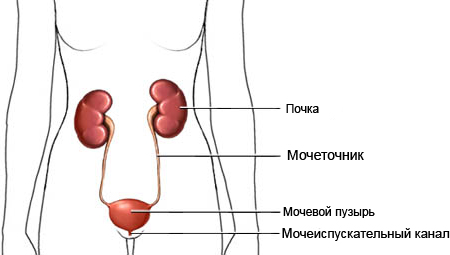Treatment of vesico-vaginal fistula
Description treating vesico-vaginal fistula
The procedure involves treatment of an abnormal connection between the urinary tract (usually, bladder) and vagina. CVIS (fistula) – channel, connecting between an external environment or hollow organs or tumor surface or a body cavity. Treatment can range from the simple to the complex operation.

The reasons for the treatment of vesico-vaginal fistula
Repair of vesico-vaginal fistula in women can be done for the following reasons:
- Injuries of the urinary tract (eg, during delivery, surgery or radiation therapy);
- Previous surgery;
- Tumor;
- Crohn's Disease;
- Reduced blood flow due to radiation or long-term birth.
Possible complications of the treatment of vesico-vaginal fistula
Complications are rare, but the procedure does not guarantee the absence of risk. If you plan the treatment of vesico-vaginal fistula, you need to know about possible complications, which may include:
- Urinary tract infection or other infections;
- Irritation or inflammation of the vulva (vagina);
- Damage to the bladder, vagina or urethra (tube, that carries urine from the bladder);
- Bleeding;
- Adverse reaction to anesthesia (eg, low blood pressure, breathlessness);
Factors, that may increase the risk of complications:
- Smoking;
- Obesity;
- Receiving blood-thinning medicines;
- Large or complex fistula;
- The presence of chronic infection or inflammation.
How is the treatment of vesico-vaginal fistula?
Preparation for the procedure
The doctor appointed the following:
- Medical checkup, blood and urine tests, as well as the fulfillment of images of internal organs;
- Determine the type of anesthesia, to be used and its potential hazards.
Tell your doctor about taking any medications. A week before surgery, perhaps, you need to stop taking certain drugs:
- Aspirin or other anti-inflammatory drugs;
- Blood thinners (eg, warfarin, clopidogrel).
We need to organize a trip for the operation and back home from the hospital.
If there is an indication of a doctor, you need to stop eating and drinking for 6-8 hours before the procedure.
Anesthesia
Used general anesthesia, which blocks the pain and the patient support in a sleep state during operation. Administered intravenously in the arm or hand.
Procedure repair vesico-vaginal fistula
You will be prepared for surgery. For administration of drugs and fluids set dripper. Operation can be done through the vagina or through an incision in the abdominal cavity.
Transvaginal surgery
After you fall asleep, the doctor will insert a catheter into the urethra. To expand the vagina using a special spreader. The doctor finds fistula. The walls of fistula will be cut. The fistula will be closed seams. Will be applied to the vagina special bandage.
Transperitoneal surgery
In the lower part of the abdomen will be made a small incision. After determining the location of the fistula, its wall will be cut, but not deleted. The fabric is sewn so, to remove the connection between the urinary tract and the vagina. The walls of the vagina and the urinary tract walls will be restored. The abdominal wall is sutured. After the procedure, the catheter can be left, to help drain urine. The doctor can also be set stent (type of catheter) in the ureters (tube, through which urine from the kidneys into the bladder).
Immediately after repair vesico-vaginal fistula
The urethra can be installed temporary catheter.
How long will the repair of vesico-vaginal fistula?
1 – 3 hour or more, depending on the complexity of the operation.
Repair puzыrno-vlagalishtnogo Svishti – Will it hurt?
Anesthesia prevents pain during surgery. Pain or soreness during recovery are removed with the help of painkillers.
The average hospital stay after repair vesico-vaginal fistula
The operation is performed in a hospital. Usually the duration of stay of:
- 1-2 days for simple operation;
- 3-5 days for a complex operation;
Your doctor may prolong hospitalization, If there are complications.
Care after the removal of the spleen
Care in a hospital
After the procedure, the hospital staff may do the following:
- Make observations before the end of anesthesia;
- Provided assistance with walking and feeding;
- Provided painkillers;
- Are trained to care for the catheter. Catheter, probably, It will be removed in a few weeks.
Home Care
After returning home, follow these steps:, to ensure the normal recovery:
- Take medication to relieve pain and spasms of the bladder and decrease the risk of infections;
- Avoid heavy lifting and strenuous exercise for several weeks after the procedure;
- Drink plenty of fluids (eg, 8-10 glasses a day);
- Do not drive or have sex, until the doctor says, it's safe;
- Ask the doctor, when it is safe to shower, bathe, or to expose the surgical site to water;
- Be sure to follow your doctor's instructions.
Contact your doctor after removal of the spleen
After discharge from the hospital need to see a doctor, If the following symptoms:
- Increasing the pressure or pain in the operation;
- Redness, pain, bleeding or discharge around the incision;
- Modified smell, appearance or the amount of urine;
- Inability to urinate;
- Signs of infection, including fever or chills;
- Excess blood in the urine (a small amount of blood – normal).
